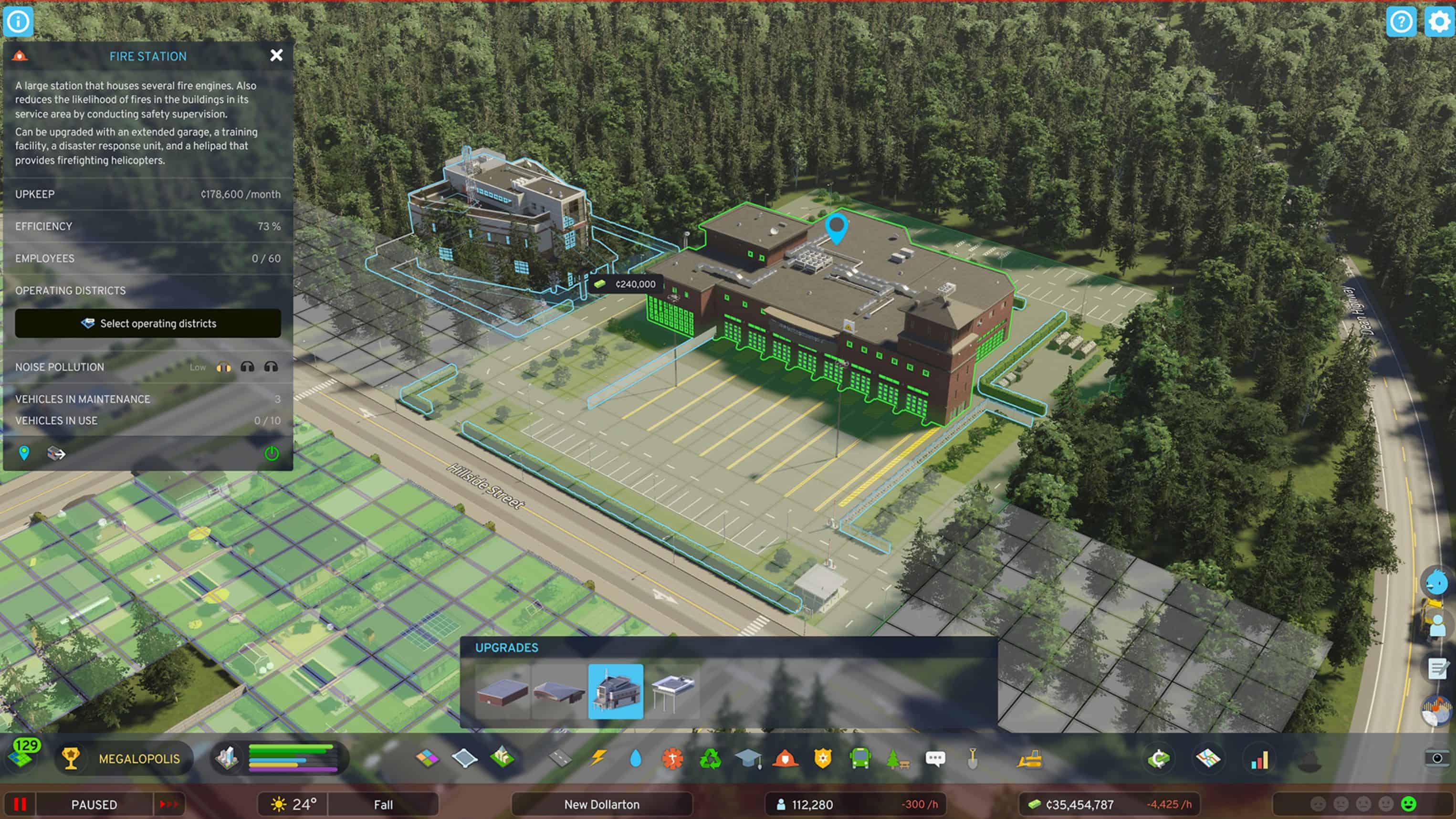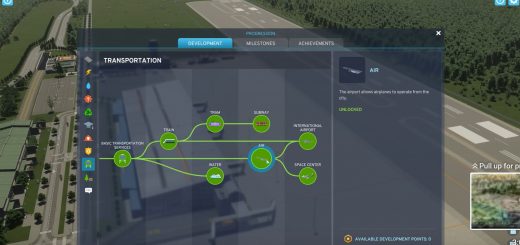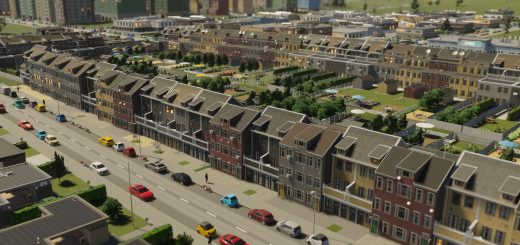Cities Skylines 2: Service Upgrades
Cities: Skylines II introduces an innovative city service upgrade system, a departure from its predecessor where city service buildings were simply placed without subsequent enhancement options. In the sequel, almost every service building can be upgraded, allowing for broader servicing capabilities and addressing varying citizen needs.
This flexibility means that instead of simply placing another building when there’s increased demand, you can now upgrade the existing one. For instance, an ambulance depot can be attached to a Medical Clinic, boosting its capacity for patients and ambulances. An Elementary School, on the other hand, can be upgraded with an extension wing to accommodate more students, or with a Children’s Clinic or Playground to boost student health and welfare.
Power plants offer another illustration of this versatility. They can be enhanced with extra turbines for more electricity or an exhaust filter to reduce pollution. You could also add storage spaces for surplus fuel. The variety of upgrades available ensures that service buildings can be tailored to specific needs.
However, it’s essential to weigh the costs. Upgrades aren’t just monetary investments; they often increase the maintenance cost of a building. Decisions should be based on the city’s demands. For example, a power plant on the city’s outskirts might not need an exhaust filter if prevailing winds direct pollution away from residential zones. Conversely, a centrally-located, older plant might require a filter to curb its pollution impact. Similarly, determining whether to expand a school or construct a new one depends on student distribution and the desire to minimize travel and traffic.
UPGRADE CATEGORIES
- Operational Upgrades: These upgrades, while not altering a building’s exterior, enhance its functionality. Examples include boosting a Radio Mast’s bandwidth, fitting a Coal Power Plant with exhaust filters, or incorporating a dispatch center in a Taxi Depot.
- Extensions: These are tangible additions to the primary building. They typically amplify capacity, range, or output. Examples include medical and school extension wings for added patient or student volume, service vehicle fleet garages, and power plant turbines to enhance electricity production. Extensions integrate seamlessly into the existing building lot.
- Sub-buildings: These are distinct structures added to the primary building’s lot. They can bolster functionalities, like the Children’s Clinic or Playground for an Elementary School. Space is a factor; hence, when initially placing a service building, it’s wise to consider potential future sub-building additions.
In conclusion, Cities: Skylines II offers players a richer, more strategic experience in urban planning, ensuring that every building can evolve with the city’s ever-changing needs.






